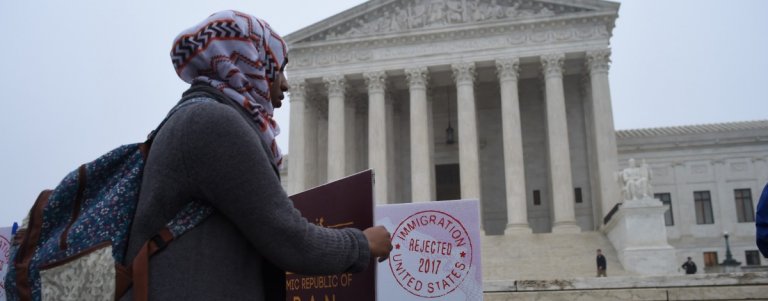
We’re mere days from the second anniversary of the travel ban. First coming into effect on 27 January 2017, the initial version of the travel ban, often referred to as the Muslim ban, halted citizens from seven Muslim-majority countries from entering the US. The executive order, which President Donald Trump justified on the grounds of national security, affected international students who are nationals of these countries too.
Fast forward to today and several lawsuits and appeals later, we now have the Travel Ban 3.0, approved by the Supreme Court last June. Citizens of Iran, Libya, Somalia, Syria, Yemen, North Korea and Venezuela are restricted from entering the US.
Students from Iran, Libya, Somalia, Yemen and Venezuela are not affected by this ban – student visas for these nationals, including the US F-, M-, and J-class study visas are exceptions to the non-immigrant visa classes targeted by the proclamation. Only those from Syria and North Korea are prevented from attending college in the US.
Exemption or not, the travel ban’s damage is done. International students continue to be spooked from applying to study in the US, even though it’s only students from seven countries who are affected by the ban.

Protesters gather outside the Supreme Court for the No Muslim Ban Ever protest on April 25, 2018 in Washington, DC. Source: AFP/Tasos Katopodis/Getty Images for MoveOn.org
Adrianna Dyczkowsky, a Public Relations Specialist with ApplyBoard, an online marketplace that places international students at US and Canadian colleges, told Forbes :
“Students who dream of pursuing higher education in the US can expect to undergo strict screening if they come from any one of the countries included in this travel ban.”
According to the ICEF Monitor, this includes “enhanced screening and vetting requirements” for Iranians, “appropriate additional measures” to ensure travel information is current for Venezuelans, “additional scrutiny” for links to terrorist organisations or any threat to national or public security in the US for Somalians and Iraqis.
The stringent screening and selection process has caused many students to seek their degrees elsewhere. An analysis by Inside Higher Ed last year found that “the number of F student visas granted for students from the affected countries had fallen sharply, as had the number of short-term B visas, a category used by foreign scholars when they come to the US for conferences.
“Beyond the countries that are specifically affected, many in American higher education have raised concerns about the unwelcoming message the [travel ban sends] to international students and scholars from around the world.”
Here’s where Canada and the US stand in terms of international student immigration via @ASemotiuk / @Forbes https://t.co/mvjyQYOrFu
— ApplyBoard (@ApplyBoard) January 21, 2019
Dyczkowsky notes that interest for American universities has now been diverted to Canada and elsewhere. Unable to hire foreign talent in the US, some US companies have moved to hiring in Canada instead.
With its reputation for unfriendly immigration policies growing by the day, the US is set to see more potential students abandon their dreams of studying in an American college. It doesn’t help that a policy change announced last year, which alters how “unlawful presence” after a study visa expires is calculated, could lead to international students being deported and subject to a three year bar from the US.
After all, a recent ICEF study found that the availability of study visas is the top reason students provide for choosing a country of study (70 percent), followed by finances (35 percent) and the global economic and political situation (25 percent).
Analysts have argued that it isn’t the Trump Effect that should be blamed for US universities losing foreign applicants, but rather the increasing cost of an American degree. Forbes reported a fee hike of almost US$5,000 for international applicants since 2012, a figure more than 11 times of the increase slapped on Americans. In total, students from abroad are paying more than three times in tuition and fees (US$23,5000 in 2016) compared to US citizens, according to figures from the National Postsecondary Student Aid Study.
American universities may still be highly popular abroad for now, but the combination of unfriendly visa policies and swelling costs may just be enough to topple it from its long-held position as the number one study abroad destination.
Liked this? Then you’ll love…
Working in Canada: What international students should know before applying
US: This student loan company offers scholarships to international students too







